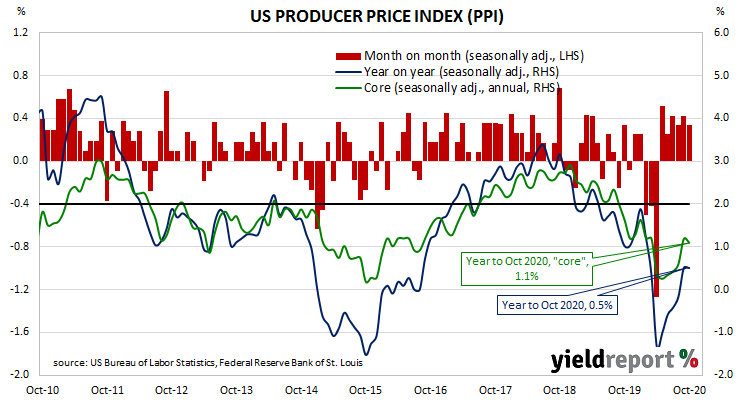Summary: Prices received by producers rise by 0.3% on average in October; increase higher than expected; annual “core” PPI rate slips; long-term US bond yields up a touch; PPI rise driven by higher goods prices.
Around the end of 2018, the annual inflation rate of the US producer price index (PPI) began a downtrend which then continued through 2019. Months in which prices received by producers increased suggested the trend may have been coming to an end, only for it to continue, culminating in a plunge in April. Figures from subsequent months suggest a return to “normal” may be taking place.
The latest figures published by the Bureau of Labor Statistics indicate producer prices rose by 0.3% after seasonal adjustments in October. The increase was above the 0.2% rise which had been generally expected but a little lower than September’s 0.4% rise. On a 12-month basis, the rate of producer price inflation after seasonal adjustments remained at 0.5%.
“US October PPI data disappointed again, with underlying inflation pressures still extremely subdued…There is no evidence of inflation accelerating at the moment,” said ANZ economist Hayden Dimes.

PPI inflation excluding foods and energy rose by 0.1% in October after recording increases of 0.4% in August and September. The annual rate slipped from September’s 1.2% to 1.1%.
The report was released on the same day as the University of Michigan’s latest reading of its Consumer Sentiment Index and US Treasury bond yields moved slightly higher across the curve. By the end of the day, 2-year, 10-year and 30-year Treasury yields all finished 1bp higher at 0.18%, 0.89% and 1.65% respectively.

